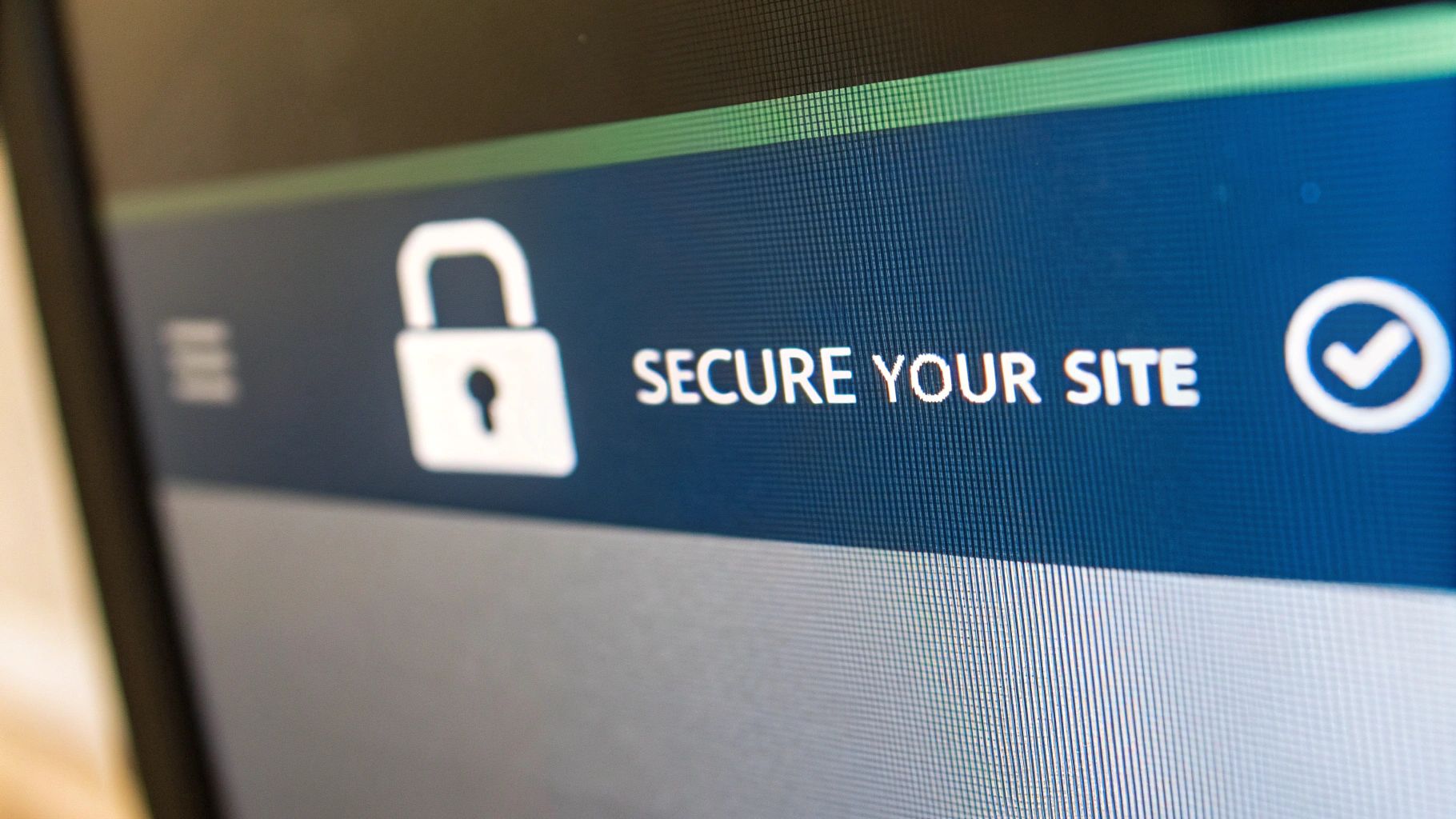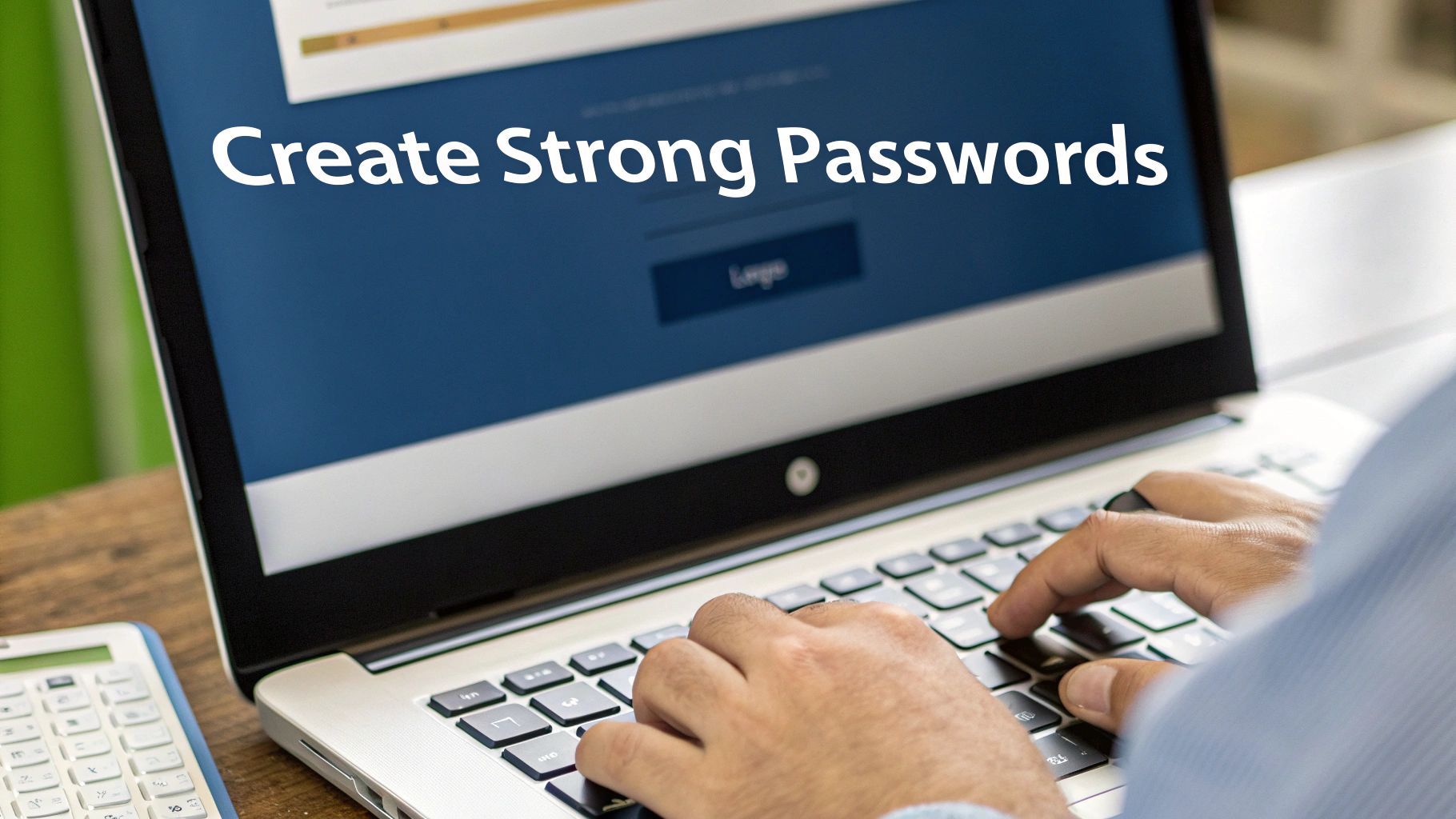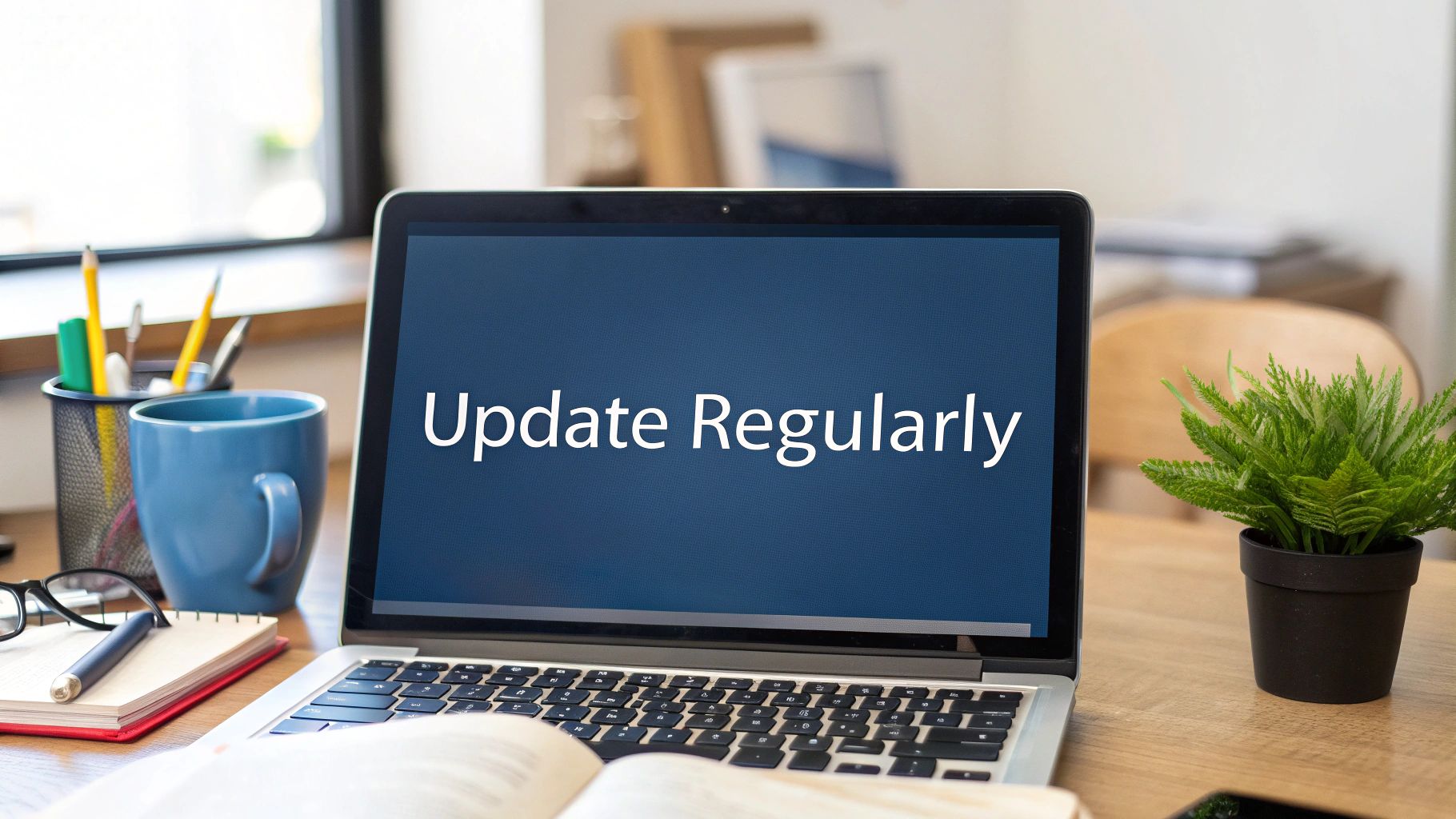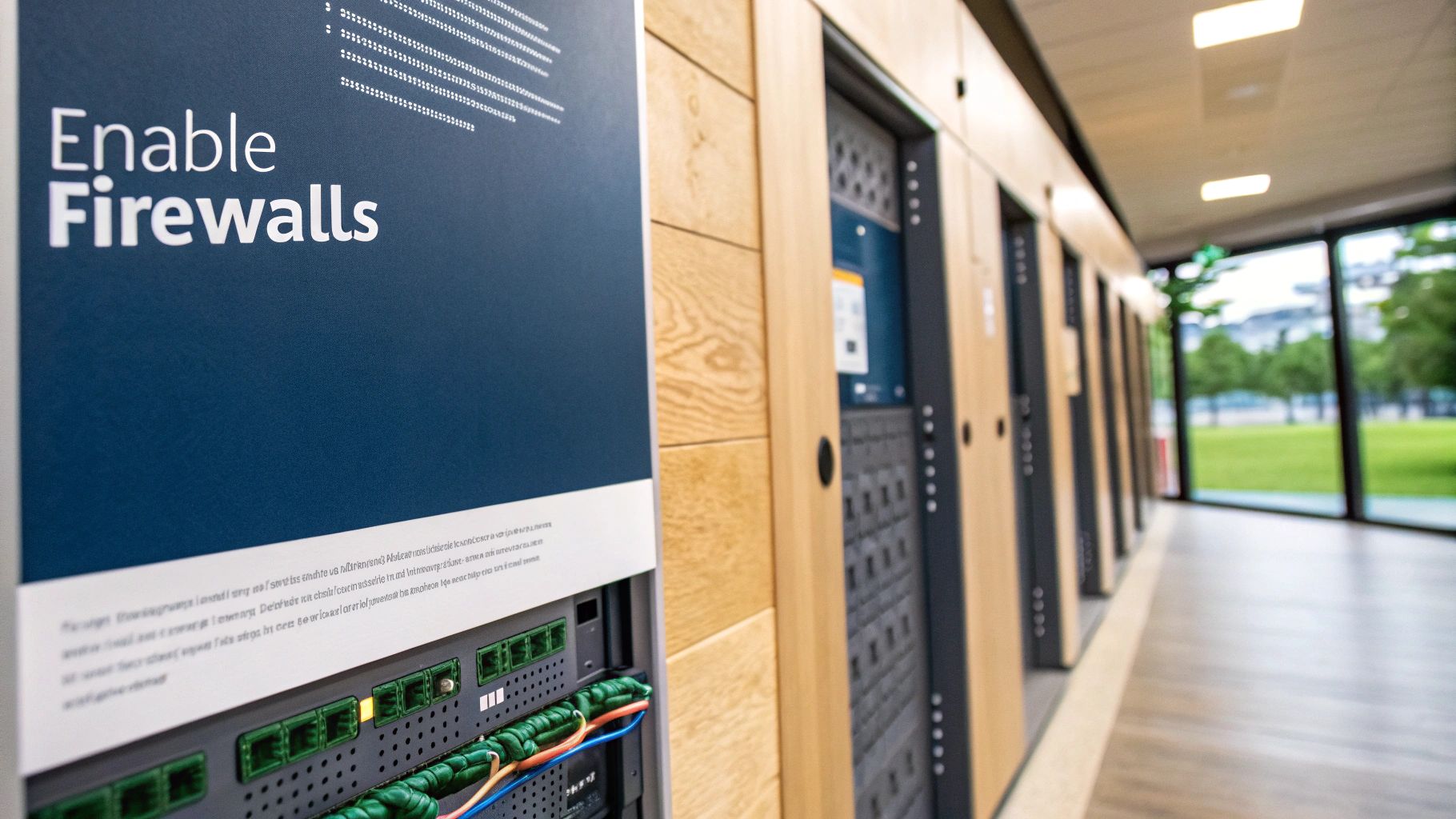WordPress Security Best Practices: The Complete Guide to Protecting Your Website
Understanding Today's WordPress Security Landscape

WordPress powers around 43% of all websites, making it an obvious target for cybercriminals. With countless plugins and themes extending its functionality, website owners need to stay alert to emerging security risks. Let's explore the key security challenges facing WordPress sites and how to protect against them.
Why WordPress Sites Are Prime Targets
The massive popularity of WordPress makes it an appealing target for attackers – similar to how a densely populated city attracts more crime than a small town. While WordPress itself is secure, its open-source code allows bad actors to study it for weak points. The scale of attacks is significant – in just the first half of 2023, Wordfence's firewall blocked 3 million attempts to breach WordPress sites.
Evolving Threat Patterns and the Shortcomings of Traditional Security
Basic security measures like strong passwords aren't enough anymore. Modern attacks are getting more advanced and creative. For example, brute-force attacks, where hackers try endless username and password combinations, have exploded in frequency – Wordfence blocked 159 billion such attempts in 2022 alone. That's why sites need multiple security layers working together, including two-factor authentication, limited login attempts, and web application firewalls.
Common Attack Vectors and Case Studies
Most WordPress security issues come from plugins and themes rather than WordPress core. In fact, around 90% of vulnerabilities are found in plugins that add features but sometimes introduce security gaps. A real example is the WPgateway plugin vulnerability from 2022 that put over 280,000 sites at risk. This shows why carefully choosing, updating and monitoring plugins is essential for keeping WordPress sites secure.
The Prevalence of Malware and SEO Spam
Malware and SEO spam pose major risks to WordPress sites. SEO spam attacks, where hackers inject code to manipulate search rankings, make up 55.40% of attacks. Another 34.14% involve malware that can steal data or send visitors to malicious sites. Both types of attacks seriously damage a site's reputation and search visibility. Regular malware scans and strong firewalls are must-have protections. The key is taking action before problems occur – staying informed about new threats and maintaining solid security measures helps keep WordPress sites safe for the long run.
Building Your First Line of Defense
A secure WordPress site starts with strong authentication – but basic passwords alone aren't enough anymore. You need multiple security layers working together to protect your site while keeping it accessible to legitimate users. Let's explore the key components of a solid authentication system.
Implementing Two-Factor Authentication
Adding two-factor authentication (2FA) creates an extra security checkpoint beyond just passwords. It's like having both a key and an access code for your front door – even if someone gets your password, they still need that second verification step to get in. Most 2FA systems generate temporary codes through an app or SMS message. Setting it up is usually quick and simple using security plugins or authentication services.
Managing User Roles Effectively
Careful control over user permissions is essential for WordPress security. Giving everyone admin access is risky – if one account gets hacked, your whole site is exposed. WordPress lets you set specific user roles with different permission levels. For example, writers typically just need to manage their own posts, while editors need broader access to review and publish content. Following this "least privilege" approach – giving users only the access they truly need – helps contain potential security breaches.
Strengthening Login Security
The WordPress login page needs special protection since it's a prime target for attacks. Hackers often use automated tools to rapidly test username and password combinations, called brute-force attacks. Setting limits on failed login attempts is an effective defense – after a certain number of wrong passwords from one IP address, that user gets temporarily blocked. This simple measure stops automated attacks in their tracks. For perspective, Wordfence blocked an incredible 159 billion brute-force attempts in 2022.
Real-World Implementations and Pitfalls
Let's look at how these security measures work in practice. Picture a WordPress site with multiple contributors: Using 2FA for all accounts and limiting login attempts creates strong protection. Clear user roles keep contributors focused on their specific tasks. But watch out for common issues – if someone loses access to their 2FA device, they could get locked out of their account. Similarly, overly strict user roles might block people from doing their jobs properly. The key is finding the right balance between security and usability. Pick reliable security plugins and take time to configure them correctly. Remember that about 8% of WordPress sites get hacked through weak or stolen passwords – so proper authentication really matters for keeping your site safe.
Mastering Plugin and Theme Security
While strong passwords and proper authentication form the foundation of WordPress security, plugins and themes demand special attention. They can be your site's biggest weakness – research shows that around 90% of WordPress vulnerabilities come from plugins. Let's explore how to choose and manage plugins securely.
Evaluating Plugin Security Before Installation
Just like reading product reviews before making a purchase, you can assess a plugin's security before installing it. Here are key factors to check:
- Developer Reputation: Choose plugins from established developers who have a track record of maintaining secure products
- Update History: Look for regular updates and maintenance – plugins that haven't been updated in months could have unpatched security holes
- User Feedback: Read through reviews to spot any security concerns raised by other users
- Installation Base: A large number of active users often indicates better maintenance and testing, though this isn't a guarantee
For example, if you're choosing between two similar plugins – one from a well-known company with frequent updates and positive reviews, versus an unknown developer's plugin with no recent updates and security complaints – the safer choice is clear.
Maintaining a Secure Plugin Ecosystem
Keeping your plugins secure requires ongoing attention and care. Here's what you need to do:
- Regular Clean-ups: Review your plugins periodically and remove any you don't actively use. Each inactive plugin is a potential entry point for attackers
- Timely Updates: Install plugin updates as soon as they're available since they often contain important security fixes. Delaying updates leaves known vulnerabilities exposed
- Security Scanning: Use tools to check for known plugin vulnerabilities before they can be exploited by malicious actors
Real-World Examples and Best Practices
Smart site owners take plugin security seriously. Many set up automatic updates for non-critical plugins to stay current with security patches. They also use website security tools and firewalls to block suspicious activity targeting plugin weaknesses. Remember – it only takes one vulnerable plugin to compromise your entire site. Follow these guidelines consistently to protect your WordPress installation and keep your site running smoothly and securely.
Implementing Advanced Protection Strategies
Once you've set up strong login security and properly managed your plugins, it's time to add more advanced defenses to protect your WordPress site. These additional security layers work together to defend against common attack methods and keep your site safe from hackers. By putting multiple protections in place, you make it much harder for attackers to successfully breach your site.
Harnessing the Power of Security Headers
Security headers are special instructions that tell web browsers how to handle different aspects of your site's security. While they may seem like small technical details, they play a big role in protecting your site from attacks. Think of them as extra locks on your doors – each one makes breaking in more difficult.
Here are the key security headers you should know about:
- Content Security Policy (CSP): This tells browsers which content sources they can load, blocking malicious scripts that attackers try to inject into your site. For example, it can prevent harmful JavaScript from running if someone manages to plant it in your code.
- HTTP Strict Transport Security (HSTS): This forces all connections to use HTTPS encryption, even if someone types http:// by mistake. This stops attackers from intercepting data between your site and visitors.
- X-Frame-Options: This prevents your site from being embedded in frames on other sites, stopping clickjacking attacks where hackers overlay fake buttons to trick users.
- X-XSS-Protection: This turns on the browser's built-in filter against cross-site scripting (XSS) attacks for an extra layer of protection.
You can add these headers through plugins or by editing your .htaccess file directly. Choose the method that matches your technical skills and security needs.
Firewall Configuration: Your Front-Line Defense
While security headers work in the background, a web application firewall (WAF) actively monitors incoming traffic for signs of attacks. The WAF checks every request against known attack patterns and blocks suspicious activity before it reaches your site. This stops many attacks before they can do any damage.
When choosing a WAF, look for these important features:
| Feature | Importance |
|---|---|
| Rule Updates | Gets regular updates to protect against new threats |
| Ease of Use | Simple setup and management |
| Performance Impact | Doesn't slow down your site |
| Support | Help available when you need it |
Malware Prevention and Remediation
Even with good defenses, malware can sometimes get through. Regular scans help catch malicious code quickly before it causes problems. This is like getting checkups to catch health issues early.
When choosing a malware scanner, make sure it offers:
- Regular Automatic Scans: Set-and-forget monitoring to catch issues
- Comprehensive Detection: Finds different types of malware like backdoors and phishing code
- Easy Removal: Simple tools to clean infected files
By combining these different security measures, you create multiple layers of protection for your WordPress site. Each layer makes attacks harder, working together to keep your site and data secure. Regular maintenance of these security tools helps stay ahead of new threats.
Choosing and Configuring Security Solutions
After covering essential WordPress security practices, let's explore how to select and configure effective security tools. With so many options available, finding the right security plugins can feel overwhelming. The key is understanding what your site needs and choosing tools that protect it well without slowing it down.
Selecting the Right Security Plugin
A good security plugin forms the foundation of protecting your WordPress site. The right plugin acts like a guard, stopping attacks before they can do damage. Different plugins focus on different things – some mainly provide firewall protection, while others offer more complete security features. Here's what to look for:
- Firewall Protection: You need a Web Application Firewall (WAF) that regularly updates its rules to block new threats. This stops malicious traffic before it reaches your site.
- Malware Scanning: Make sure your plugin can automatically scan for and remove malware. Regular scans help catch problems early.
- Two-Factor Authentication (2FA): This extra login step makes it much harder for attackers to break in. Pick a plugin that works with different 2FA methods.
- Intrusion Detection and Prevention: Look for tools that watch for suspicious activity and alert you quickly if something seems wrong.
- Security Hardening: Basic protections like limiting login attempts, blocking file editing, and requiring strong passwords help prevent common attacks.
Configuring Your Security Solutions for Maximum Effectiveness
Getting the right tools is just the first step – you also need to set them up properly. Good configuration helps your security tools work better without causing problems. Focus on these key areas:
- Firewall Rules: Set rules that block attacks but let real visitors through. Rules that are too strict might block legitimate users by mistake.
- Scan Schedules: Run automatic malware scans when your site isn't busy to avoid slowing things down.
- Notification Settings: Have important security alerts sent to your email so you know right away if there's a problem.
- Performance Optimization: Adjust settings so security tools don't make your site slow. Using caching along with security can help keep things fast.
- Regular Updates: Keep your security plugin and WordPress itself up to date. Old software often has security holes that attackers can use.
Beyond Plugins: Exploring Additional Security Measures
While plugins provide great protection, good security needs more than just plugins. These extra steps add important layers of protection:
| Security Measure | Description |
|---|---|
| Security Headers | Add headers like CSP and HSTS to make your site safer in visitors' browsers |
| Database Security | Back up your database often and use a different prefix to make attacks harder |
| File Permissions | Set the right permissions to control who can access and change important files |
By carefully choosing and setting up your security tools, and adding extra protection beyond plugins, you can greatly reduce the risk of attacks. Stay informed about new security threats and check your protection regularly to keep your WordPress site safe as threats change.
Creating a Bulletproof Maintenance Strategy
Like a car needs regular maintenance to run properly, your WordPress site requires ongoing care and attention to stay secure. Simply installing security plugins isn't enough – you need an organized approach to catch and prevent issues before they become serious problems.
Scheduling Essential Security Tasks
The foundation of good WordPress security is having a structured maintenance schedule. Here's a practical framework for essential security tasks:
-
WordPress Core, Plugin, and Theme Updates: Apply updates as soon as they're released. Enable automatic updates for minor releases to stay current, since outdated components are a prime target. Recent data shows that 61% of hacked sites in 2024 were running old versions of software.
-
Backups: Make complete site backups at least weekly, or daily for actively changing sites. Store these backups securely offsite, separate from your hosting account. This gives you a reliable way to restore your site if something goes wrong.
-
Malware Scans: Run malware scans every week at minimum. Setting up automated scans helps catch malicious code quickly. Most quality security plugins can handle this automatically and notify you of issues.
-
Security Audits: Do a thorough security review monthly or quarterly. Check user permissions, file integrity, and security logs for any suspicious patterns.
Automating Your Workflow for Consistent Protection
Managing all these security tasks manually takes a lot of time and it's easy to miss things. That's where automation becomes essential. Today's security plugins can handle updates, backups and scans automatically based on your schedule. For example, you can set plugins to update automatically, schedule cloud backups, and run malware scans during quiet hours. This hands-off approach keeps your site protected without constant manual work.
Developing a Security Checklist and Response Plan
Having a clear security checklist helps you stay on top of WordPress security basics. Include items like:
- Verify Two-Factor Authentication is enabled for all users
- Confirm login attempt limits are in place
- Check that file permissions are correctly configured
- Ensure security headers are implemented
- Verify the WAF is active and up-to-date
Beyond the checklist, you need a documented plan for handling security incidents. This should spell out exactly what steps to take if your site is compromised – from identifying the breach to containing damage, restoring backups, and preventing future issues. A clear response plan helps you act quickly and minimize the impact when problems occur.
Think of good maintenance as building protective walls around your WordPress site. With regular scheduled tasks, smart automation, and clear procedures in place, you can effectively defend against threats and keep your site secure for the long run.
Want to streamline your WordPress debugging and gain deeper insights into your site's performance? Check out DebugBar, a valuable resource for web developers and marketers looking to optimize their websites and stay informed about the latest technology trends.


